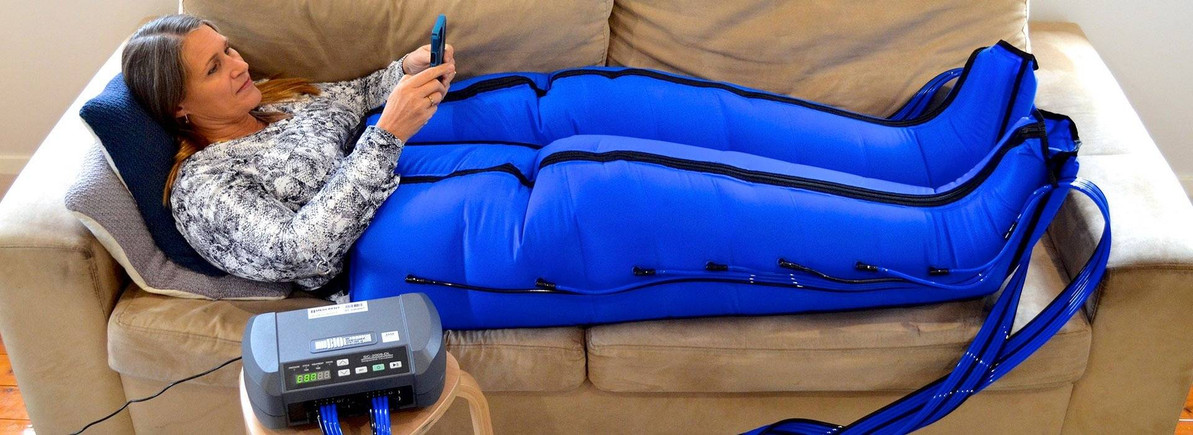Optimising Oedema Management
Optimising Oedema Management: The Power of Compression Pumps in Lymphoedema Care
By: Larissa Westhuyzen, ALA recognised Lymphoedema Therapist
If you or a loved one are managing lymphoedema, you're likely familiar with compression garments—the steady support that helps control swelling and encourage fluid movement. But did you know that adding sequential intermittent pneumatic compression (SIPC) pumps to your treatment routine can significantly enhance your oedema management?
As a lymphoedema therapist, I often work with clients who rely solely on compression garments, and while they are essential, they don’t always provide the dynamic stimulation needed to optimise lymphatic flow. Let’s explore the differences between compression garments and pneumatic compression pumps, and why integrating pump therapy into your routine might be the key to improved comfort and control.
Compression Garments: The Foundation of Lymphoedema Management
Compression garments—such as sleeves, stockings, or gloves—are crucial for maintaining lymphatic drainage throughout the day. These garments provide consistent pressure, helping to prevent excessive swelling and support circulation.
✔ Provides graduated pressure, reducing fluid accumulation and supporting lymphatic function.
✔ Enhances venous return and prevents worsening oedema by counteracting fluid stasis.
✔ Essential for long-term oedema control and maintaining results from manual lymphatic drainage (MLD) therapy.
Despite their effectiveness in managing swelling, compression garments primarily contain fluid rather than actively mobilising lymph. Unlike manual lymphatic drainage (MLD) or sequential intermittent pneumatic compression (SIPC), static compression does not stimulate lymphangiomotoricity—the intrinsic contractions of lymphatic vessels essential for fluid movement [(Rockson et al., 2019)].
Consequently, some individuals may continue to experience residual discomfort, heaviness, and suboptimal lymphatic clearance despite consistent garment use. Integrating dynamic compression techniques such as SIPC pumps or MLD can further enhance fluid evacuation and improve overall symptom management [(Ridner et al., 2017)].
Sequential Intermittent Pneumatic Compression Pumps: A Powerful Addition
Sequential intermittent pneumatic compression (SIPC) pumps are devices designed to enhance lymphatic drainage by delivering rhythmic, graduated pressure to affected areas. Unlike compression garments, these pumps actively push lymph fluid through your system, mimicking manual lymphatic drainage therapy.
Why Add SIPC Pump Therapy to Your Routine?
Stimulates Lymphatic Flow – The pump gently squeezes and releases pressure in cycles, encouraging trapped fluid to move toward functioning lymph nodes.
Reduces Heaviness and Discomfort – Many clients report reduced limb heaviness, stiffness, and joint pain after regular pump therapy sessions
Customisable Settings – Pumps allow tailored pressure and cycle durations based on your needs.
Supports At-Home Care – While manual drainage from a therapist is ideal, a pump can help maintain results between sessions.
Balancing Compression Garments and Pump Therapy for Best Results
Compression garments serve primarily as your everyday maintenance tool, ensuring lymph fluid doesn’t reaccumulate. Meanwhile, SIPC pumps provide active drainage, helping remove excess fluid and making your garments more effective.
Together, these two approaches create a balanced oedema management plan—compression garments keep swelling in check, and pumps work behind the scenes to actively encourage fluid movement.
While SIPC pumps are highly beneficial, they should always be used under the guidance of a Lymphoedema Therapist. Every individual’s needs are unique, and factors like skin condition, and other health considerations must be assessed before incorporating pump therapy into a routine.
If you’re wondering whether a compression pump could help you or your loved one, schedule a consultation with our Lymphoedema Therapist, Larissa Westhuysen, to explore the best treatment options for long-term relief and management.

At SuperPharmacyPlus we have Medirent’s LF900 and Biocompression pumps available for trial.
Taking charge of your lymphatic health is about finding the right combination of therapies that work for YOU—compression garments lay the foundation, and pump therapy can be the missing puzzle piece in improving comfort, mobility, and overall well-being.


Recent Posts
-
Sep 30, 2025
How Savvy Touch Rocket Fuel Australia Works and What It Does
How Savvy Touch Rocket Fuel Australia Works and What It Does: Benefits, Ingredients, D … -
Sep 24, 2025
The Science Behind Compression And Circulation Benefits: How Compression Improves Blood Flow and Health
The Science Behind Compression And Circulation Benefits: How Compression Improves Bloo … -
Sep 16, 2025
Does the use of paracetamol during pregnancy cause autism?
Paracetamol Use in Pregnancy: What the Latest Research Really Says About Autism RiskRe …







